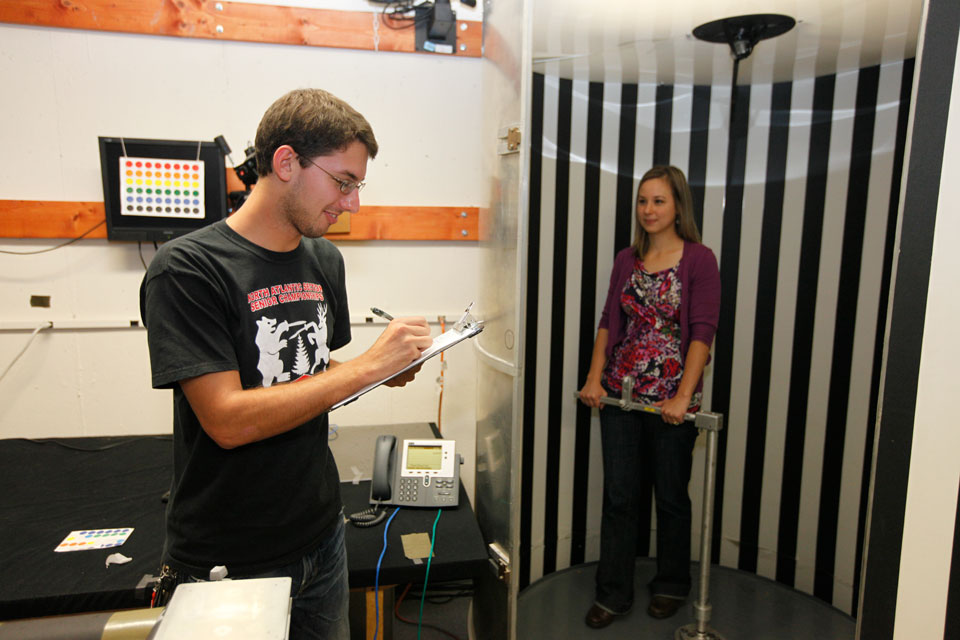Optokinetic Drum

When a limb is used for locomotion, patterns of afferent and efferent activity related to its own motion are present as well as visual, vestibular, and other proprioceptive information about motion of the whole body.
A study is reported in which it was asked whether visual stimulation present during whole-body motion can influence the perception of the leg movements propelling the body. Subjects were tested in conditions in which the stepping movements they made were identical but the amount of body displacement relative to inertial space and to the visual surround varied. These test conditions were created by getting the subjects to walk on a rotatable platform centered inside a large, independently rotatable, optokinetic drum.
When visual surround motion was incompatible with the motion normally associated with the stepping movements being made, changes in apparent body motion and in the awareness of the frequency, extent and direction of the voluntary stepping movements resulted.In each test condition, subjects, without looking at their legs, compared, against a standard condition in which the floor and drum were both stationary, their speed of body motion, their stride length and stepping rate, the direction of their steps and the perceived force they exerted during stepping.
Reference
- Visual Stimulation Affects the Perception of Voluntary Leg Movement During Walking. James R. Lackner and Paul DiZio; Perception, 17, 71-80, 1988.